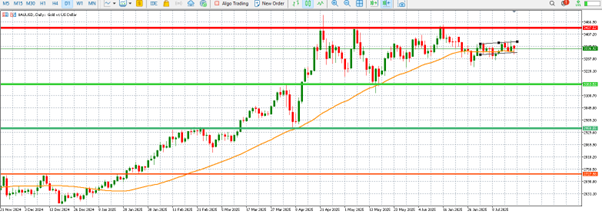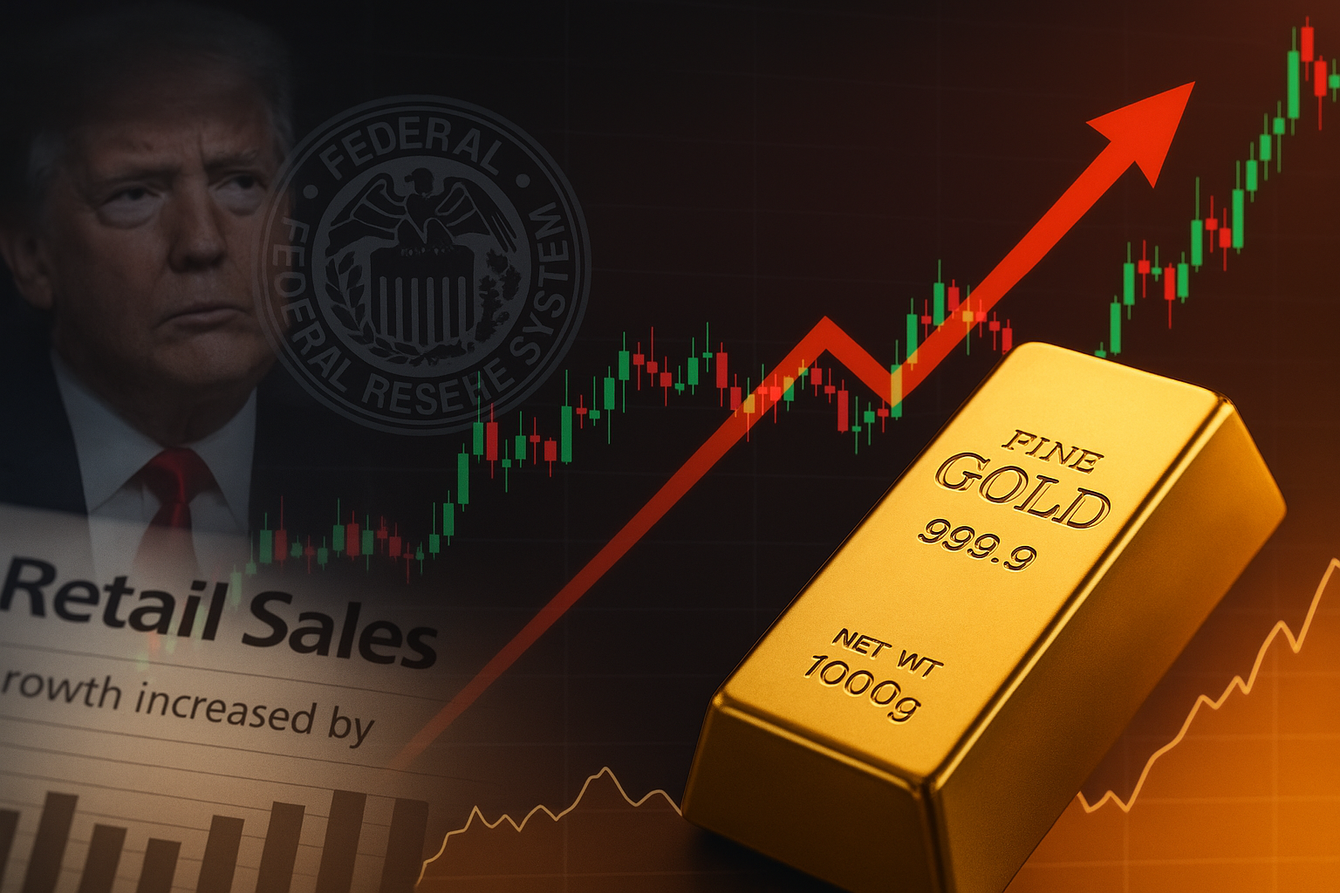(Kitco Commentary) - Gold prices remain the subject of keen attention due to a combination of economic announcements, political tension, and current market sentiment. Investors in the previous week paid most attention to three major factors: the rift between U.S. President Trump and the Head of the Federal Reserve, the surprisingly strong retail sales report for the period, and the latest U.S. non-farm payroll (NFP) and U.S. inflation data. Each of these factors, while separate, together represents a major role in the short-term direction of the prices of gold, as investors seek to take stock of the potential effect upon the dynamics of the market.
Tensions Between President Trump and the Fed Chairman: A Key Driver for Gold
One of the most notable political events of the last year has consisted of the tension between President Trump and Federal Reserve Chief Jerome Powell. President Trump has continued to criticize Powell as the Federal Reserve has raised interest rates, arguing that these moves are harmful to U.S. economic growth and inhibiting the stock market rally. Trump's bias towards a less dovish monetary policy contradicts the Federal Reserve’s current stance of tighter policy, which is driven by fears of rising inflation and the risk of a financial crisis.
From traders perspective, these tensions are extremely relevant. If Powell sticks to his hawkish stance on raising interest rates, it should support the U.S. dollar, putting downward pressure on the price of gold. If the President’s call for decreased rates gains traction, the Fed could be pushed to take a softer stance. Such a move would likely increase the pressure of inflation, historically a positive for gold, as investors seek the precious metal as a safe-haven.
Also, if political tensions rise even higher and the Federal Reserve faces more pressure from the White House, the most likely scenario would be increased volatility in the market. Gold, given its past role as a safe haven in times of political and economic volatility, would likely see more use as a store of value.
Strong Retail Sales Figures: Positive Economic Signs; But Worries for Gold are Nonetheless Present.
Following the state of the economy today, the release of the latest retail purchases data attracted significant interest. The United States enjoyed a strong month-to-month retail sales rise of 0.6%, compared to predictions of a 0.1% modest gain, hinting at a significant rebound from the previous month's -0.9% fall. The positive result hints at the presence of a strong consumption sector, something that can have implications for the rate of economic growth as well as prices.
Initially, strong retail sales would imply a booming economy, hence less need for further monetary easing from the Federal Reserve. The scenario, however, gives a double interpretation for gold. On the positive side, increased consumer spending would lead to higher inflation, something that has always inclined investors to invest in gold as a means of hedging rising prices. On the downside, if the demand from the consumers continues to be high, the Federal Reserve would be inclined to continue increasing the interest rates in order to avoid overheating the economy, something that would put the price of gold under downward pressure.
Thus, while the retail sales data is a positive sign for the U.S. economy, traders need to consider how the Fed responds. If further rate hikes are anticipated, the dollar could strengthen, which typically weighs on gold. Alternatively, if inflation rises in response to stronger demand, gold could be buoyed by its role as a hedge against rising prices.
U.S. NFP and Inflation Data: Economic Indicators that Shape Gold’s Trajectory
The U.S. Non-Farm Payrolls report, as well as the latest inflation reading for the month, added another dimension of complexity to the interpretation of the gold market. The NFP report reported a higher-than-projected rise in job additions, which confirms the resilience of the U.S. labor market. The fact, taken together with the latest reading of inflation, which also gave indications of slow rise, stresses the need for the Federal Reserve to maintain its policy stance in a finely balanced fashion.
This price data becomes especially relevant in the case of the price of gold. If the inflation continues along the rising path, the metal would benefit significantly as a standard hedge. But if the employment growth exceeds anticipation along with accelerating inflation, the Federal Reserve would be bound to get tougher, leading to more rises in interest rates, in the short run, strengthening the dollar and putting downward pressure upon the price of the yellow metal.
Technical Analysis
Technical price levels are shown in the chart below. The price is currently trading in a tight trading zone which means it is likely to break out of this soon. The green horizontal line represents the immediate support zone and the red horizontal line is the resistance.

Gold Price chart by MH Markets
Conclusion: Looking ahead, the gold market faces a delicate balancing act between economic strength, inflationary pressures, and the Federal Reserve’s policy decisions. While political tensions and retail sales data suggest potential volatility, the future of gold will largely depend on how the Fed navigates the fine line between controlling inflation and supporting economic growth. Traders should remain vigilant, focusing on economic data, central bank policy, and geopolitical developments as they shape the trajectory of gold prices.
